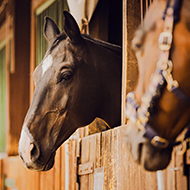Time perception in animals
Scientists from Trinity College Dublin and the Universities of Edinburgh and St Andrews have found that animals' perception of time is linked to their pace of life.
In particular, the study revealed that small-bodied animals with fast metabolic rates, such as most birds, can take on more information in a unit of time than large-bodied animals with slow metabolic rates, such as large turtles.
For the study, the team of scientists looked at different perceptions of time among various animals.
They used a phenomenon called the critical flicker fusion frequency (CFF), which records the maximum speed of flashing light an individual can see before the light source is perceived as constant.
CFF is the principle behind cinema, computer and television screens, so humans do not see a flicker.
The scientists were able to test and compare a wide range of vertebrate species using this system and measuring their responses. Commonly, the most agile animals could see the highest resolution flickers.
"Having eyes that send updates to the brain at much higher frequencies than our eyes do is of no value if the brain cannot process that information equally quickly," said Professon Graeme Ruxton, of the University of St Andrews, who collaborated on the study.
"Hence, this work highlights the impressive capabilities of even the smallest animal brains. Flies might not be deep thinkers, but they can make good decisions very quickly."
The study has been published in the international journal, Animal Behaviour. Click here to view the paper in full.



 Zoetis has launched a new survey to identify management techniques for Equine Herpes Virus (EHV).
Zoetis has launched a new survey to identify management techniques for Equine Herpes Virus (EHV).